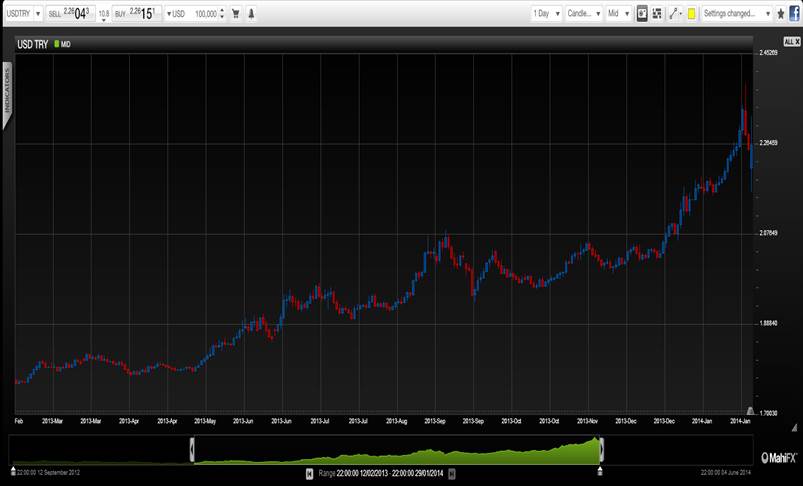The process of tapering the Fed’s quantitative easing programme was never painless, and while it has barely started, already some emerging market countries are getting into trouble as a result.
To date, the countries that have been worst affected are victims of internal problems such as political turbulence or high current account deficits. The flow of cheap money from the US Federal Reserve seems to have been papering over some serious cracks, in a similar way to what the EUR was doing for countries on the periphery of the Eurozone in recent years.
But while it would seem natural for emerging market currencies to fall against the USD while QE is being wound down, as this represents a form of monetary tightening, will it reveal deeper problems in some of these countries? Given the inter-connected nature of the global economy in the current age, this could pose a serious problem.

China and Global Growth – the Two Big Factors
According to Justin Pugsley, Markets Analyst at MahiFX, the main external factors that could determine whether the recent volatility in emerging markets is just a blip or the beginning of a deeper crisis are China, and global economic growth.
“If the main stimulus for the global economy shifts from ultra-easy money policies towards real growth – then the currencies of the better managed emerging market countries should bounce back. The others will have to go through a painful readjustment process, but will be able to do so in a less hostile global economic environment.”
“China is also key. In part because it is seen as a proxy of developed country growth (because they buy its exports) and also because it’s a huge economy in its own right and a major consumer of raw materials. So far it has only suffered an economic slowdown.”
Without a doubt, there will be more volatility created by the Fed’s transition away from quantitative easing towards a normalised monetary policy. Now, central bankers bear the responsibility of preventing this volatility from feeding on itself and turning into a systemic threat, such as a crisis in emerging markets. Because the world economy is recovering, the threat looks as though it can be contained – but any wobbles in China or global growth could change the landscape dramatically.
This post was brought to you in association with MahiFX, a leading forex broker and platform developer based in New Zealand. Follow MahiFX on Twitter here: https://twitter.com/MahiFX
Tradersdna is a leading digital and social media platform for traders and investors. Tradersdna offers premiere resources for trading and investing education, digital resources for personal finance, market analysis and free trading guides. More about TradersDNA Features: What Does It Take to Become an Aggressive Trader? | Everything You Need to Know About White Label Trading Software | Advantages of Automated Forex Trading



































